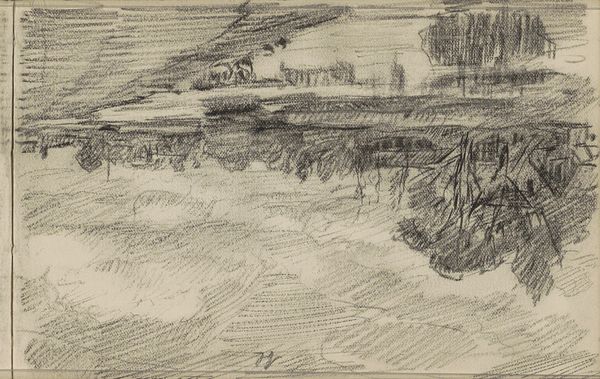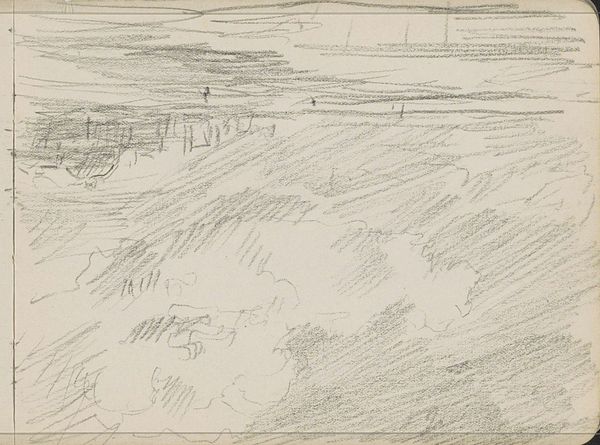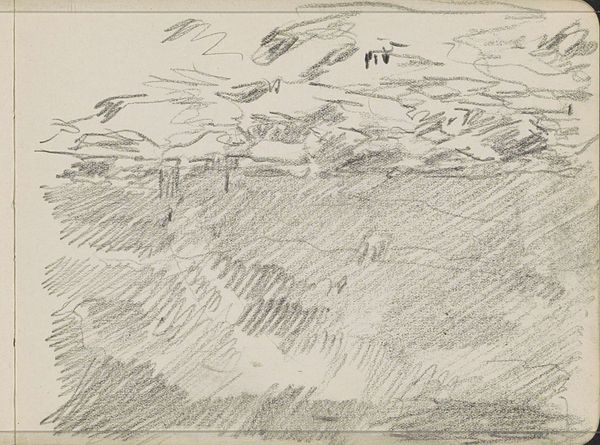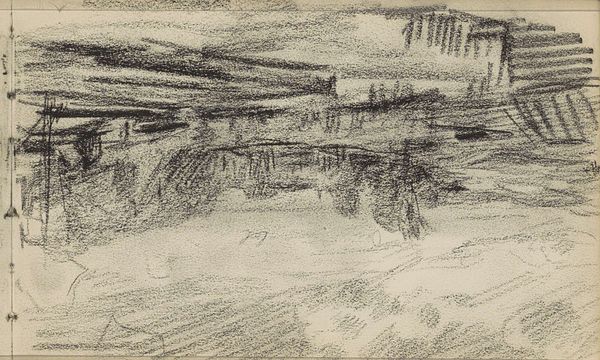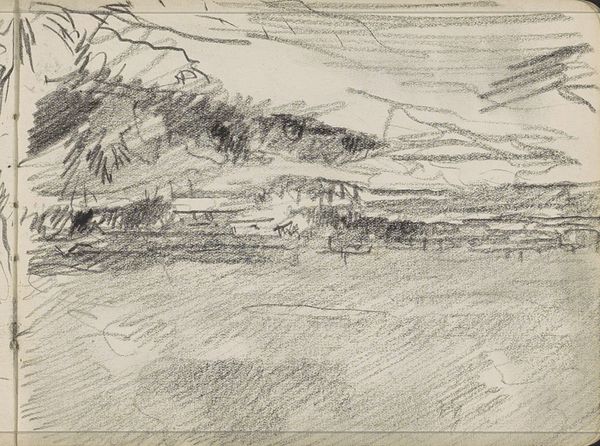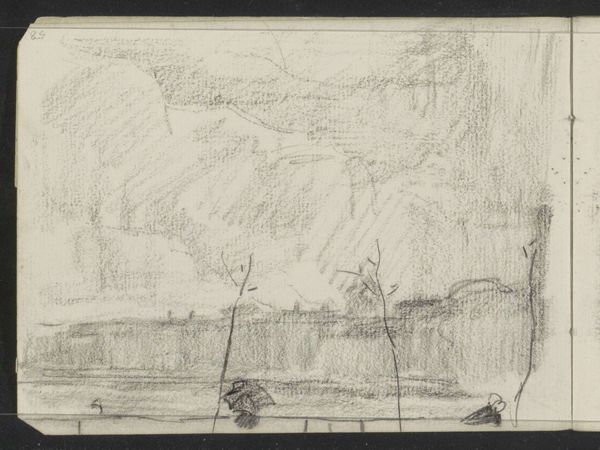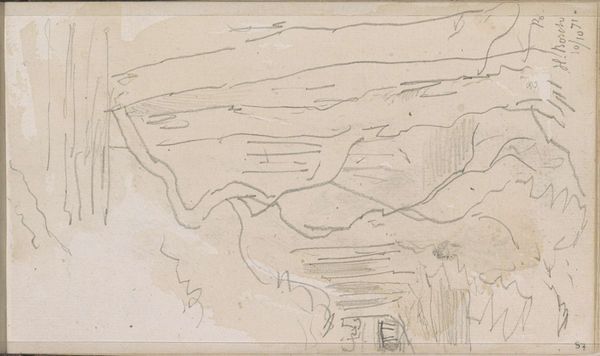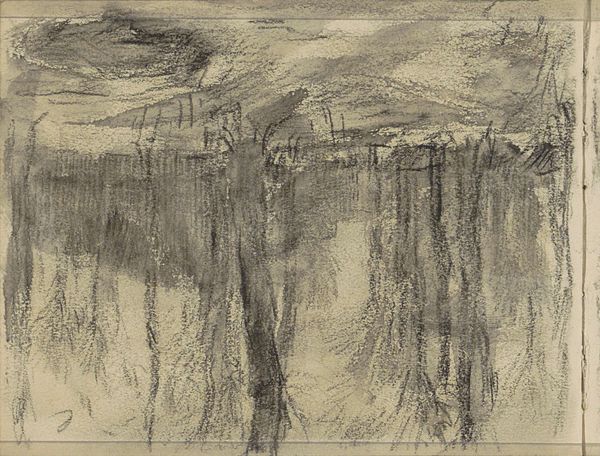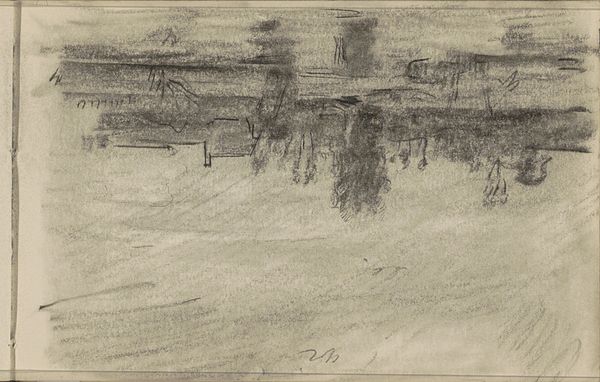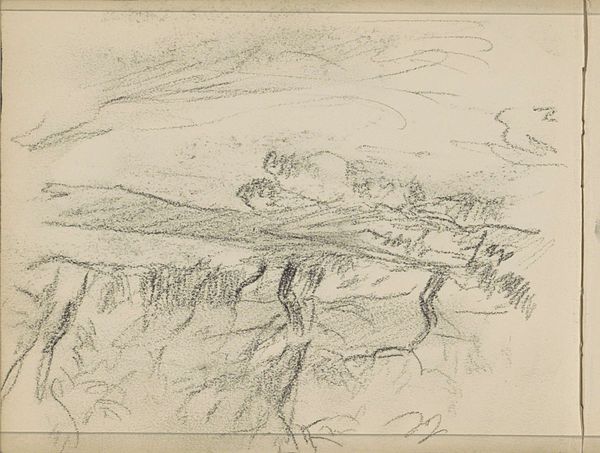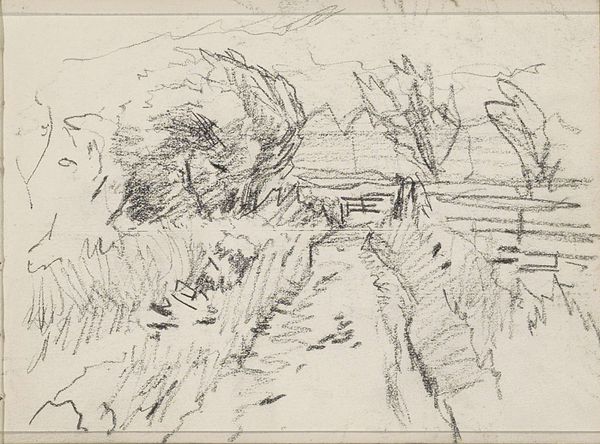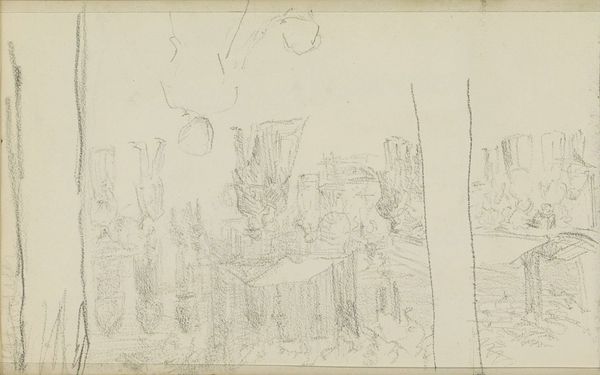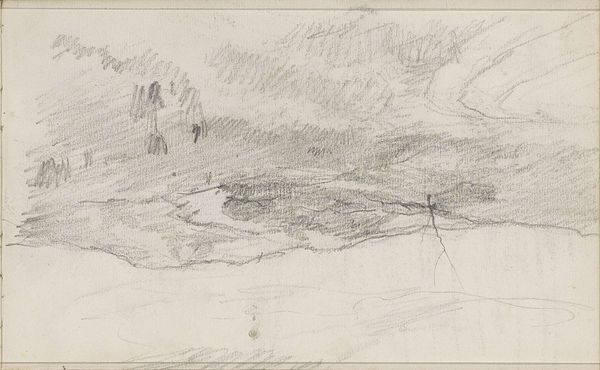
drawing, graphite
#
drawing
#
amateur sketch
#
pen sketch
#
sketch book
#
incomplete sketchy
#
landscape
#
personal sketchbook
#
sketchwork
#
sketch
#
pen-ink sketch
#
pen work
#
graphite
#
sketchbook drawing
#
realism
#
initial sketch
Copyright: Rijks Museum: Open Domain
Editor: Here we have Johan Antonie de Jonge's "Landschap met een kerk," a graphite and ink drawing created sometime between 1881 and 1927. It feels more like a preliminary sketch than a finished piece. What strikes you most about it? Curator: What stands out is the almost ephemeral quality. Given the social context of late 19th and early 20th century Holland, these sketches provide a rare look into the life and practice outside the grand salon paintings for which the time is known. Consider its incompleteness. What does this tell us about the art market in that moment, its reception for preliminary works versus finished art objects? Editor: That's interesting. So you see value in its unfinished state as a window into artistic processes of the time? Curator: Precisely! Think of the rise of plein air painting – the sketch became increasingly valued not just as prep work, but as a document of the artist’s immediate experience with the world. Its value shifted with the development of impressionism, challenging institutional tastes. Editor: I can see how a quick sketch could reveal something authentic about the artist's vision. But how does this particular piece relate to ideas around power or the institutions which displayed finished works? Curator: Good question! Ask yourself: who got to see pieces like this in De Jonge’s time? This sketch offered no immediate display value. Most likely, fellow artists and other artistic supporters saw it and perhaps that gave it cultural and educational capital that persists. Editor: I never considered what sketches say about art spaces, display culture and the networks formed around the art, even if that space was an artist's studio! Curator: Exactly. By looking beyond the polished paintings, we understand much more about the broader art landscape. Editor: I'll definitely be paying more attention to these kinds of “behind-the-scenes” pieces.
Comments
No comments
Be the first to comment and join the conversation on the ultimate creative platform.
